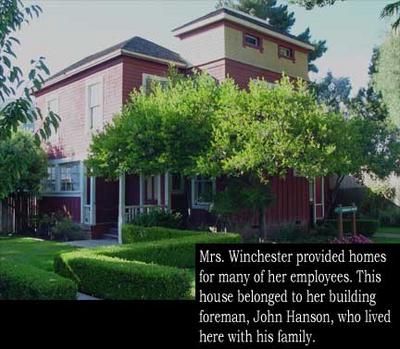Housing Allowance
 Click Here to Purchase Mystery House Prints
Click Here to Purchase Mystery House PrintsMrs. Winchester provided homes for many of her employees. This house belonged
to her building foreman, John Hanson, who lived her with his family.
I first learned of the mansion and its eccentric designer from a collection of Ripley’s Believe It Or Not! Cartoons in my grade-school library. I never imagined that I would work there as a tour guide. These are the pictures I took there, and the stories that I told.
 Click Here to Purchase Mystery House Prints
Click Here to Purchase Mystery House Prints This staircase has 7 turns and 144 steps. It connects the first floor with the second,
This staircase has 7 turns and 144 steps. It connects the first floor with the second, The steps are about one and a half inches tall. Many of the staircases in the mansion
The steps are about one and a half inches tall. Many of the staircases in the mansion